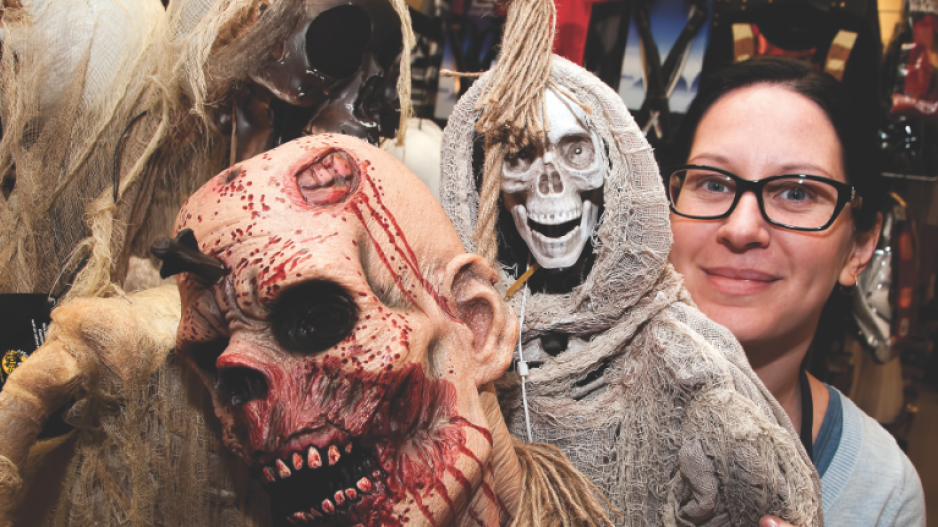Halloween in Canada has become a billion-dollar business.
“[Consumer spending] is being driven in part by kids and businesses marketing to kids,” said Katherine White, professor at the University of British Columbia’s Sauder School of Business.
Those children, White said, are what marketers would call influencers: they don’t make purchases, but they influence household spending.
“There’s more and more stuff out there that kids are seeing. It’s not just ‘I want a costume’ anymore. It’s ‘I want a costume, and I want to decorate with lights and remote-control bats, I want a party and I want to dress up the dog too.’”
According to a Harris/Decima poll conducted in 2012, Canadians spend more than $1.5 billion on the holiday with the average four-person household spending $70.
In the United States, where the U.S. Census Bureau estimates there were 41.1 million trick-or-treaters in 2015, expected household Halloween spending is closer to US$8.4 billion. Canadians spend 40% more per capita on Halloween than Americans.
Halloween’s rise in holiday prominence means increased revenue and opportunities for numerous businesses. According to Nate Sabine, marketing director of Blueprint, a Vancouver-based event company, sales at its three liquor stores jump 35% over Halloween weekends and attendance at its four bars and six nightclubs increases 15%, helping drive a 40% revenue spike.
However, for some Vancouver restaurants and bars, Halloween can decrease sales if people opt instead for fright nights, ghost trains, private parties and other Halloween-themed events.
“Sometimes we attribute this to people having Halloween parties at home, people trying to avoid downtown or Gastown and the gong show that it usually is, especially when trying to get taxis late night,” said Alannah McIntyre, general manager of the Pint Public House and Sports Bar.
“There are also so many big Halloween venues, like the PNE, which draw a lot of our usual patrons on Halloween.”
With roughly $10 billion in potential Halloween sales up for grabs across Canada and the U.S., seasonal stores pop up to take advantage of the opportunity. New Jersey-based Spirit Halloween has a chain of 1,200 seasonal Halloween costume and party stores. Although the stores located across the continent will close on November 1, Spirit Halloween’s corporate office works year-round to ensure its stores, which are opened just eight weeks in autumn, maximize sales and revenue during that short window of opportunity. Merchandise buyers and Spirit’s product development teams both work year-round to guarantee products are ready when the stores open.
Running a seasonal business presents unique problems. While they might spend less on rent, utilities and other overhead than traditional retailers do, they have to find new locations each year. That creates logistic and marketing challenges. Spirit Halloween uses a combination of digital tools and a customer service team to help direct customers to its new locations each year.
– With files from Tyler Nyquvest




